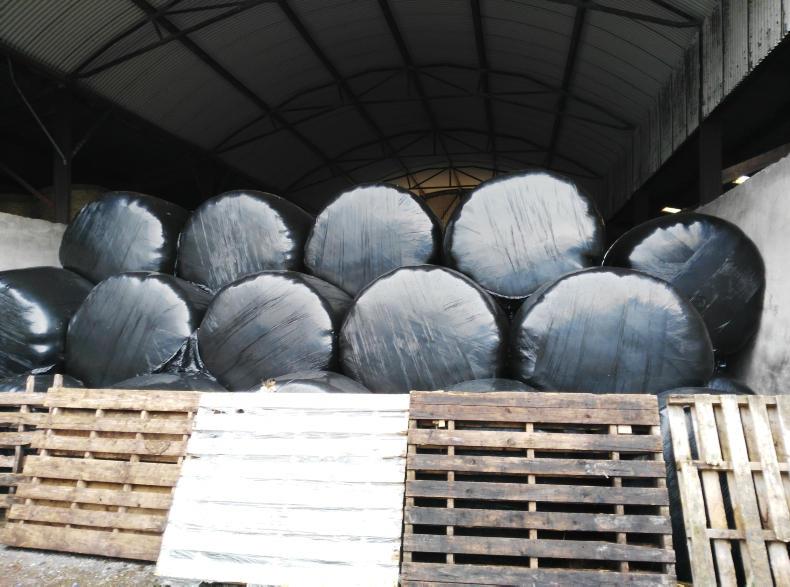Barry O’Neill says testing and analysing silage is of little benefit unless the sample is representative of most of the material in the clamp, or stack of bales. Barry uses a silage corer to take a sample that will accurately represent the silage to be analysed. For silage clamps up to 250t, one cored sample is sufficient. A point is chosen about two-thirds along the diagonal connecting one end of the front of the clamp to the back. For clamps containing 250t to 500t, two cored samples are required. At least three sample points should be taken for every 100 bales.
Tools required to take a good silage sample from a sealed clamp or bales are a silage corer and a half moon file. A silage corer is made up of a core head (about 1in light steel tubing that can be easily edged and cleaned with a slit along the side to allow the sample to be taken out). The head is attached to a 4ft length of steel piping and another 4ft extension can be screwed into the first length when required. Silage tape, a knife and a plastic bag are also required.
The corer is inserted to a depth of 6in, withdrawn, and the contents discarded in silage clamps. The corer is pushed/rotated to a depth of about 15in, withdrawn, and the contents placed in the sample bag. The procedure is continued until samples are taken almost to the floor of the clamp. It is important that excessive pressure is not applied to the corer during sampling, as this will give erroneous DM values. To minimise the pressure, the corer should be sharpened after every three samplings. Barry says this is crucial to prevent damaging the corer. The corer should only be 3/4 filled when taking a sample as over-filling will affect DM results.
Using paper towelling, thoroughly dry area around the hole made by the corer head. Use at least two strips of silage tape applied as an “X” to seal the holes in the plastic. Barry says to try and remove as much air from the bag as possible by hand before sealing. To do this, fold the bag containing sample over tightly. Start closing the seal as you expel as much air as possible. Use silage tape to seal the slit made in the polythene cover. In larger clamps, take an additional cored sample per 200t to 300t.
Sample details should be written on each bag including the farmer’s name and address and a sample identifier. They should be sent as soon as possible after sampling to the laboratory. Samples should be placed in a strong envelope or box and dispatched by either hand delivery, by post or by courier. Bales should be cored through the round of the bale and not from the ends.
Understanding the results
Silage pH
The pH of a silage is a measure of the acidity of a silage. A pH of 3.8 to 4.2 is best and will show silage that is preserved and will keep well. A low pH value may indicate very acidic silage and may require buffering to avoid stomach upsets such as acidosis. Silages that have a pH greater than 4.5 may be poorly preserved, but on the other hand some well-preserved wilted (very dry silages) may have a high pH and be perfectly good.
Dry matter percentage
This is a measure of the amount of silage remaining after the water has been removed. Water has no feeding value – that is why we exclude it. The higher the dry matter, the more energy the animal will receive per kilo of silage consumed.
Dry matter digestibility
The DMD percentage is the best indicator of silage feeding value. This will show the amount of utilisable energy in the silage.
Good-quality leafy grass cut in good conditions in early June should have a high DMD of 75, while silage cut in poor conditions and late when the crop is gone to head will only have a DMD of 60 or less.






 This is a subscriber-only article
This is a subscriber-only article









SHARING OPTIONS: